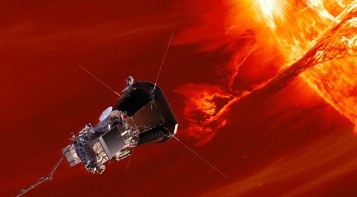mundiastronomy.ie
Main menu:
- Home Page
- About Us
- Membership
- Science Week 2022
- CanSat 2019 National Final
- CanSat 2019
- Robot Builders in Orbit
- International Project: Light Curve
- Archives 1 - Comenius
- Archives 2 - National Space Centre
- Archives 3 - Fashion Show
- Archives 4 - CanSat
- Contact Us
- Power of Language
- Corona
- Exoplanet and Host Star
- Latest News: European Space Agency
- Looking Back to Some Highlights: STEM SOUTH WEST VIRTUAL SHOWCASE EVENT
Corona

A "corona" is a rarefied gaseous envelope that surrounds the sun and other stars. Its radiance is normally only visible during a total solar eclipse, therefore its beauty is best appreciated in darkness. So, in physics we decided to "focus" on that meaning of the word, as opposed to any other, and that led to TY Physics setting out on a quest to search for other interesting fun physics facts. We asked the 5th Year physics class to help us vote for the two most interesting facts we found on Particle Physics. Here they are:
"The Large Hadron Collider may be able to produce microscopic black holes. Though Einstein's theory of relativity states that because of the established properties of gravity that would be impossible, there are some theories that predict that the particles needed for microscopic black holes could potentially be produced at the LHC, though they would disintegrate immediately (in about 10 to the power of minus twenty seven seconds) so the black holes would not be dangerous in any way." (Inga)
"Light is affected by gravity: even though light does not have any mass its path is affected by things that do e.g. the Sun. So, if a beam of light from a far-off star passes close enough to the Sun it will bend slightly around it. This means that we see the star in a different spot of sky than it's actually located … like a fish in water isn't exactly where you think it is …" (Abigail)